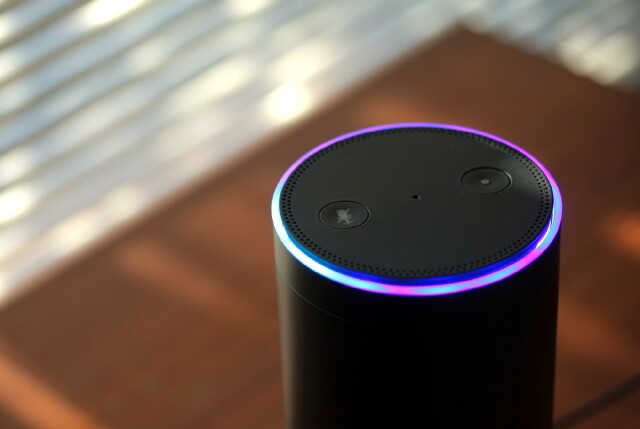The Voice of Brands Is Changing

Internet = 1995. Mobile = 2007. Data = 2014. In 2018 it’s “Voice,” and I’m not referring to the hit singing show on TV. I’m referring to the explosion of voice-activated technology that is rapidly changing the way we interact with the world around us. According to a recent NPR and Edison Research study, the number of people in the U.S. using a voice assistant device jumped 128% to 16% of U.S. adults since January 2017. And, the Consumer Technology Association says purchase intentions indicate 44% will own one by 2018.
Let’s start where it all began. In the beginning, there was voice. The primary means of communication for thousands of years was word-of-mouth and the spoken word. Over time humans created written language and started keeping records of what was being said. Fast forward thousands of years and we come to the internet and the ability for the written word to flourish and spread like wildfire. Along the way we created new languages that relied on complex knowledge to effectively operate them -- and that brings us to where we are today.
We have developed technology so advanced that it understands what we’re saying. We are now talking to the machines, asking them to perform tasks for us. These machines have names like Alexa and Siri and Eva. These machines are creating value, either in terms of performing actions, providing information or extracting value from conversations. It’s an exciting time to be in technology!
With the advent of voice, marketers are trying to jump in with both feet and understand what this means. They’re trying to understand what the implications are for them and how they use it to communicate to their audience. For years I said the promise of the brand has to match the experience of the brand. That remains true; if you say the brand will deliver a value, it has to deliver that value. Now the brand has to have an authentic voice or it needs to be available for a world where voice is quickly becoming the UI (user interface) of choice.
Voice Is the UI of Choice
For most brands, they won’t be having a direct conversation with the consumer, but the character of the brand will be represented by anyone who does. Do you foresee a consumer asking Alexa or Google Home about your brand? If so, what will be said? Are you engaging with those companies to provide content? Are you aware of what kinds of questions they’ll be asking … and are you capable of taking that information and learning from it?
Does your brand offer some kind of chatbot or voice interface? If so, what is the tone you take? What does your voice sound like? This is the most straightforward way that your brand’s “voice” will be heard, and you can’t simply throw it together. What your brand sounds like and the ways it responds, with humor or professionalism, are part and parcel to your success over time. It’s about creating a relationship -- and some people prefer a specific way the brand will sound. Will your brand sound different to different people? Will it have an accent? Should it?
When you can start to engage with a machine or device and ask it about brands, you need to know what it’s going to say. This is actually an entirely new “word of mouth” to consider: Are you seeding the right kinds of content? Are the machines and their A.I. systems going to be able to deliver the right message at the right time? These are not insignificant issues to think through. For brands to harness the power of voice, I recommend the following steps to consider.
1) Ask the Question: Do I Need a Voice Strategy? This question will enable you to determine if your consumer will be speaking to you, or to other channels and devices about you. Keep in mind that a chatbot, in written format on an app or other locations, is similar to a directly spoken voice. You have to know what kinds of questions are going to be asked and you need to pre-populate a plethora of responses.
2) Is Your Strategy Direct or Channel Based? Most brands will not have a direct voice strategy, so a channel strategy makes the most sense. You need to identify which channels and partners are going to be an area of focus for you.
3) Will Your Strategy Be Reactive or Proactive? Will you be providing responses to questions or do you want to get out in front and engage consumers aggressively and create new experiences for your brand in a voice-driven ecosystem?
Think these things through and see what you come up with. This is a marathon, not a sprint. Voice isn’t going anywhere but up -- and it’s getting louder as it goes.
Click the social buttons above or below to share this content with your friends and colleagues.
The opinions and points of view expressed in this content are exclusively the views of the author and/or subject(s) and do not necessarily represent the views of MediaVillage.com/MyersBizNet, Inc. management or associated writers.


